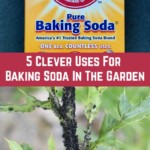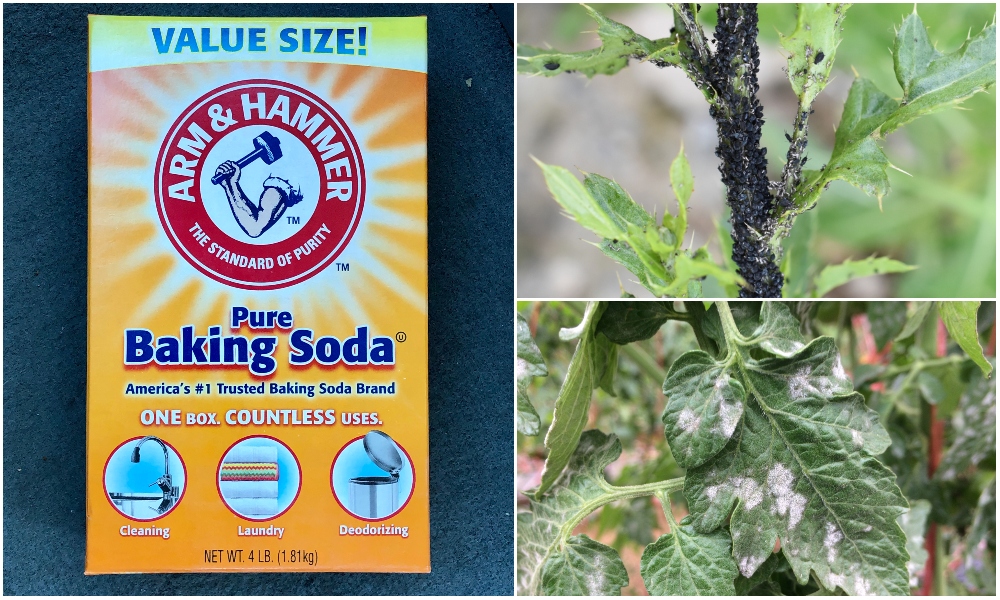
If you are trying to go greener, you may already be aware that baking soda is a very useful thing to have in your home. It can be used to make bread and other baked goods.
You can also use it to clean, deodorize, and freshen a range of things indoors, and in home-made self-cleaning and beauty products. But did you know it can also be useful in your garden? Read on to find out more.
Baking soda, also known as sodium bicarbonate or bicarbonate of soda, has the chemical formula NaHCO3.
In the United States, most baking soda is derived from Trona, an ore that is mined – mostly in Wyoming, California and Utah. In most of the rest of the world, it is derived from salt brine and limestone (from quarries) using the Solvay Process.
Of course, the carbon cost of these industries should be taken into account.
There is a carbon cost, and there can be other forms of pollution associated with these processes. But baking soda can be an eco-friendly product overall, especially when it is used to replace other, more damaging products.
For example, using baking soda rather than a whole raft of synthetic cleaners is better for the environment, and helps reduce single use plastic considerably.
I buy baking soda in cardboard boxes or compostable plastic, which further reduces environmental impact.
So, let’s take a look at some of the ways I would recommend using it in your garden:
1. To Keep Fungal Diseases at Bay
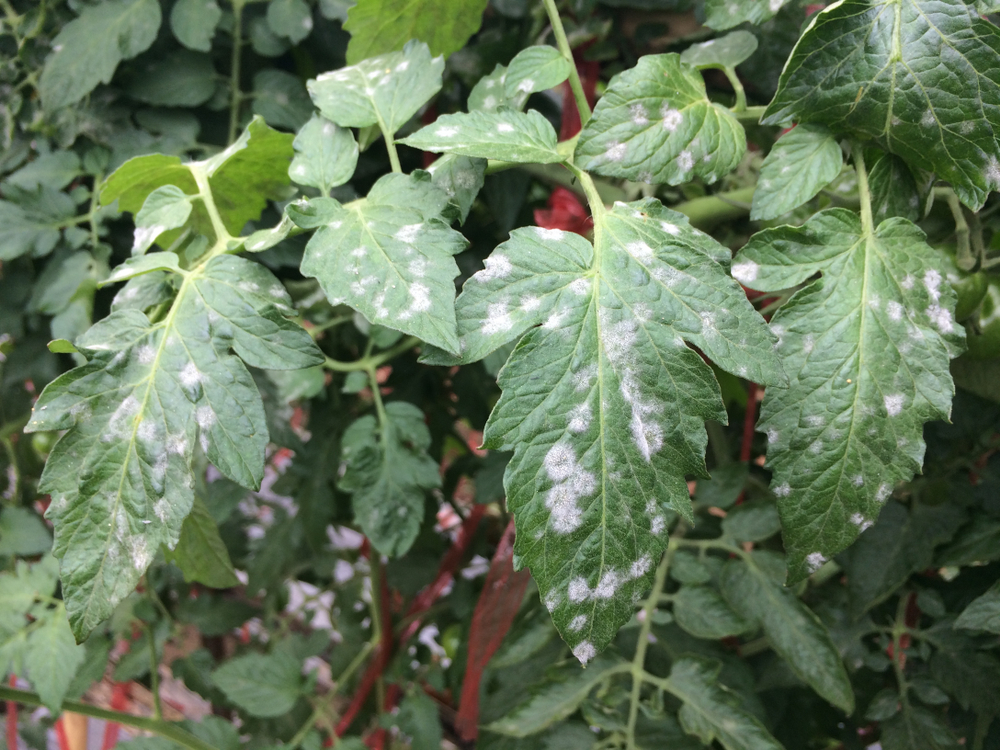
First of all, this product is safe to use in your garden, including around edible crops.
But it is worth noting that, like so many things – a little is fine, but a lot can be deadly. Some gardeners use neat baking soda to kill weeds in paving or on patios.
You can do this (though it will only be a short term solution, and they will just grow back).
But why kill weeds at all? Many are useful edible wild plants, or have other uses. And even when they are not, you can use them to make a liquid weed feed for other plants.
When you use baking soda directly on plants, it must be heavily diluted.
I make a spray using baking soda (around 1 heaped tbsp baking soda to a gallon of water). This solution is sprayed onto the leaves of affected plants after the infected material has been removed.
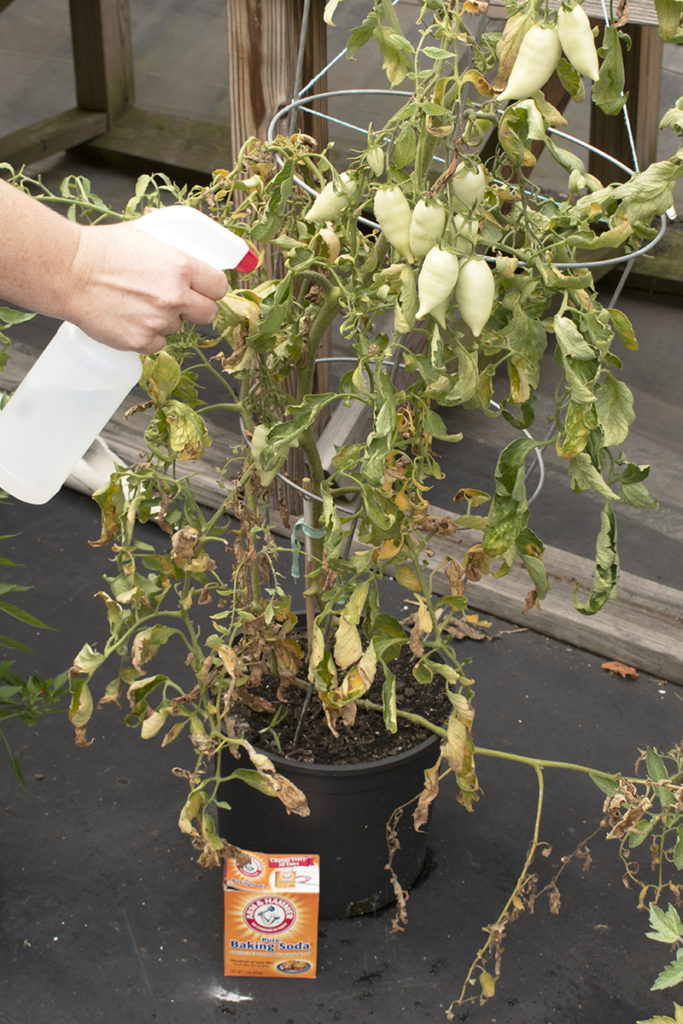
While it will not eliminate fungal diseases, it can help keep them at bay and reduce their spread.
It can, for example:
- Prevent spread of powdery mildews.
- Reduce flare up of black spot fungus on rose etc..
- Lessen spread of leaf spot, early blight and common tomato diseases.
Such a mild solution can also be amended with 2 tsp of castile soap, which will help it to stick to the leaves. And some gardeners also add vegetable oil.
Spray solutions like this should be used sparingly, and always with caution.
It is best to test it out on a small section before using it all over a plant. Don’t apply it on very hot, sunny days as this can cause problems with leaf scorch.
It is sometimes suggested that baking soda can also be added to solutions to pep up your plants, or as an ingredient in fertilizers. But I would always recommend using plant-based liquid fertilizers, along with slow-release mulches, to boost fertility and keep plants healthy in your garden.
2. To Help Control Certain Pests
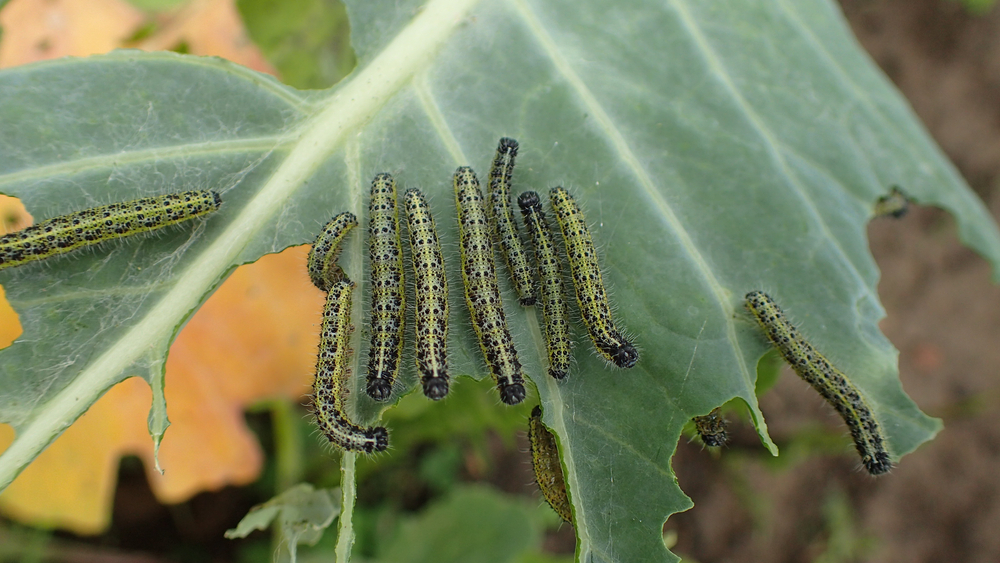
Generally speaking, I would advise that the best way to control pests in your garden is through ensuring a healthy and biodiverse ecosystem.
Use companion planting, and encourage predatory insects and other beneficial wildlife. This is far better than using short-term fixes to solve population imbalances when they arise.
That said, baking soda can be helpful in ’emergency’ measures to tackle a pest problem that has got out of control. You can use it to:
- Kill cabbage white caterpillars. (Make a powder, ½ baking soda, ½ white flour. Sprinkle it on affected leaves. When caterpillars eating your brassicas eat it, they will die.)
- Help control aphids, scale and other sap-sucking insects. (In liquid insecticide sprays, along with castile soap, garlic, neem, and other natural ingredients. But remember, insecticides will not discriminate and beneficial insects may be affected too.)
- Encourage ants to move elsewhere, or keep them out of your home. (Pour a line of baking soda and ants will often be reluctant to cross. Sprinkle it around their mounds and they will often move away.)
- Discourage cockroaches and silverfish. (These creatures too are said to dislike baking soda, and a line of it may discourage them from entering certain areas.)
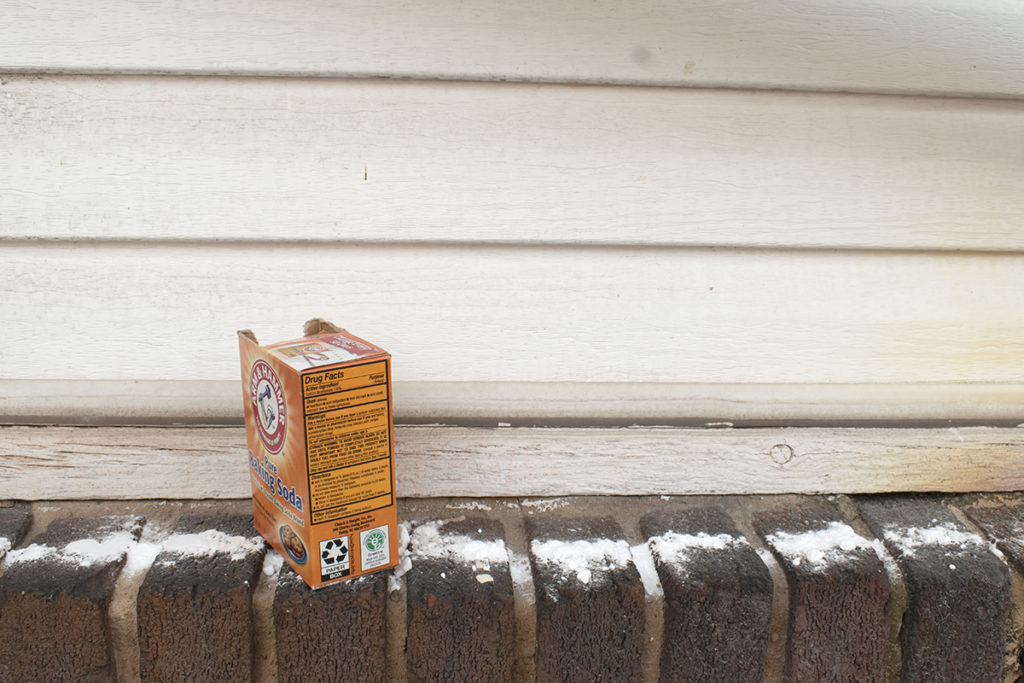
Baking soda sprinkled onto slugs will kill them. But a far more effective way to deal with slugs in your garden is by attracting birds and other creatures that will eat them. (Also, chickens and ducks eat slugs, so keep them and slugs are unlikely to become a problem.)
3. To Get an Idea of the pH of the Soil in Your Garden
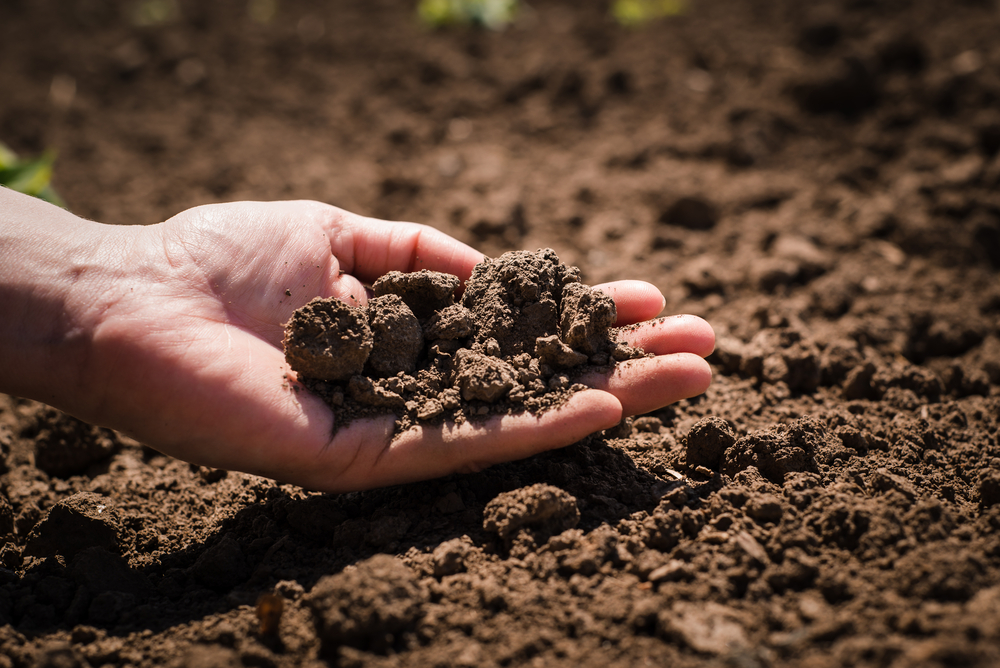
One other interesting way that baking soda can come in handy is to undertake an experiment that can help you find out whether your garden soil is acidic, neutral, or alkaline.
Take a handful of garden soil and add water to make mud. Sprinkle baking soda onto it and if it fizzes up, the soil is acidic. (A reaction takes place because the baking soda is alkaline in nature.)
My own soil is slightly acidic and so a slight fizzing reaction takes place.
If soil is alkaline or neutral, little to no reaction will occur. To tell if your soil is neutral or alkaline, add vinegar instead of baking soda.
If the soil fizzes and bubbles when vinegar is added, it is alkaline. If no reaction occurs, it is probably neutral.
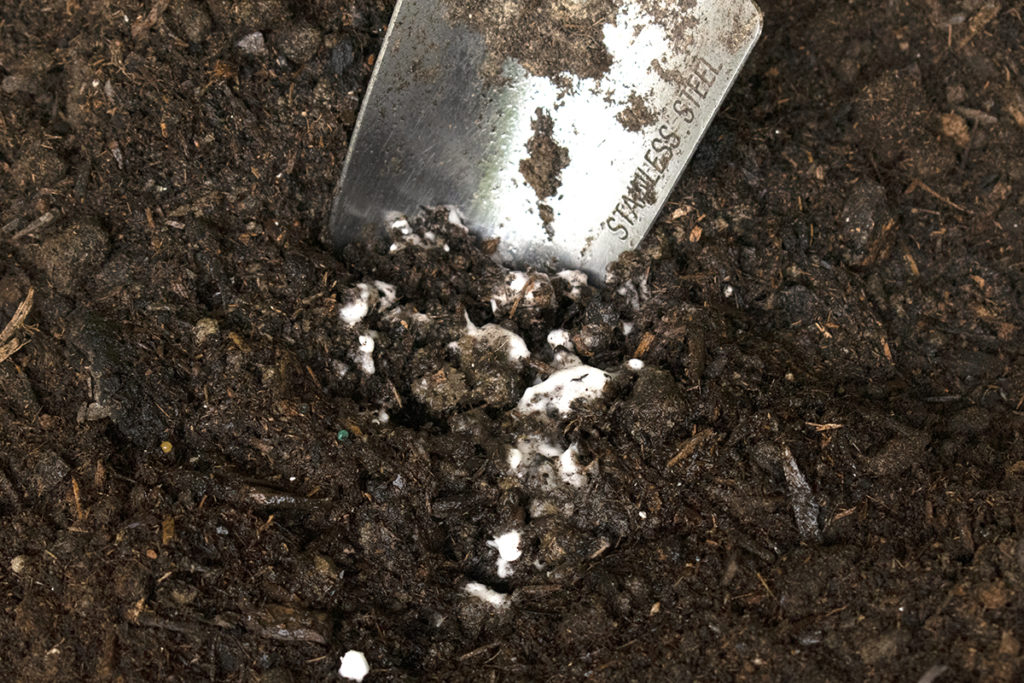
These tests are not foolproof, and won’t tell you how acidic or alkaline your soil is. To determine the pH of your soil, buy a pH testing kit. But this simple experiment should give you a very rough idea without spending any more money.
4. To Reduce Acidity Slightly
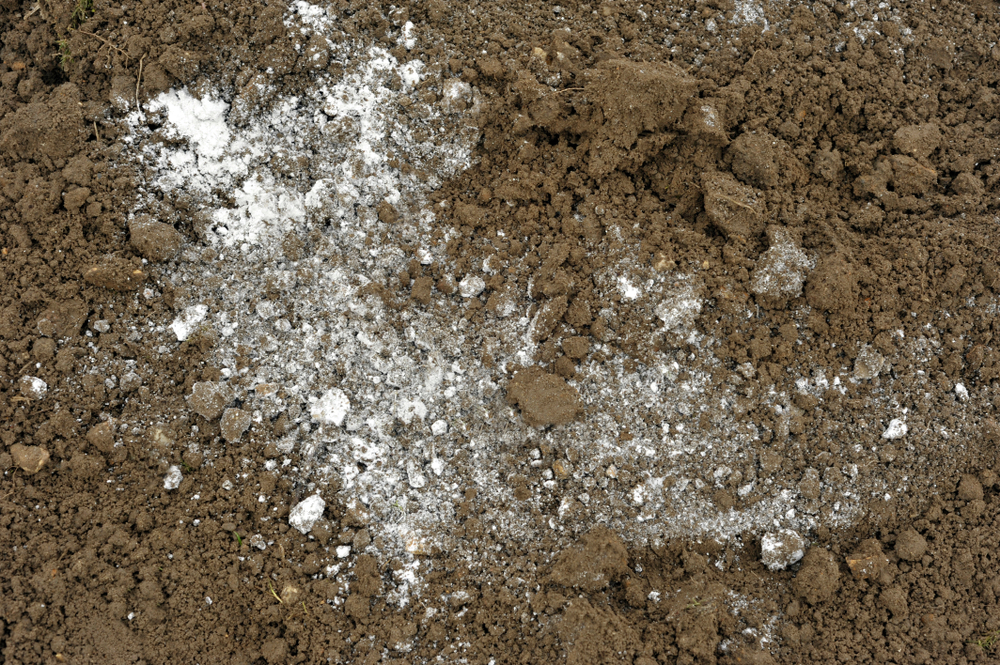
Since baking soda is alkaline in nature, it can be used to reduce acidity slightly. It can be used as an additive to amend the pH level:
- In garden soil.
- In a garden pond.
To gently and temporarily alter soil pH to the benefit of plants grown nearby, simply sprinkle a little baking soda on the soil (not too close to plants) and water in well.
Or use a diluted baking soda/water solution poured around the base of plants to make conditions slightly less acidic.
You can also add it in small quantities to a garden pond (or natural swimming pool) to reduce pH levels.
5. To Clean A Range of Things Around Your Garden
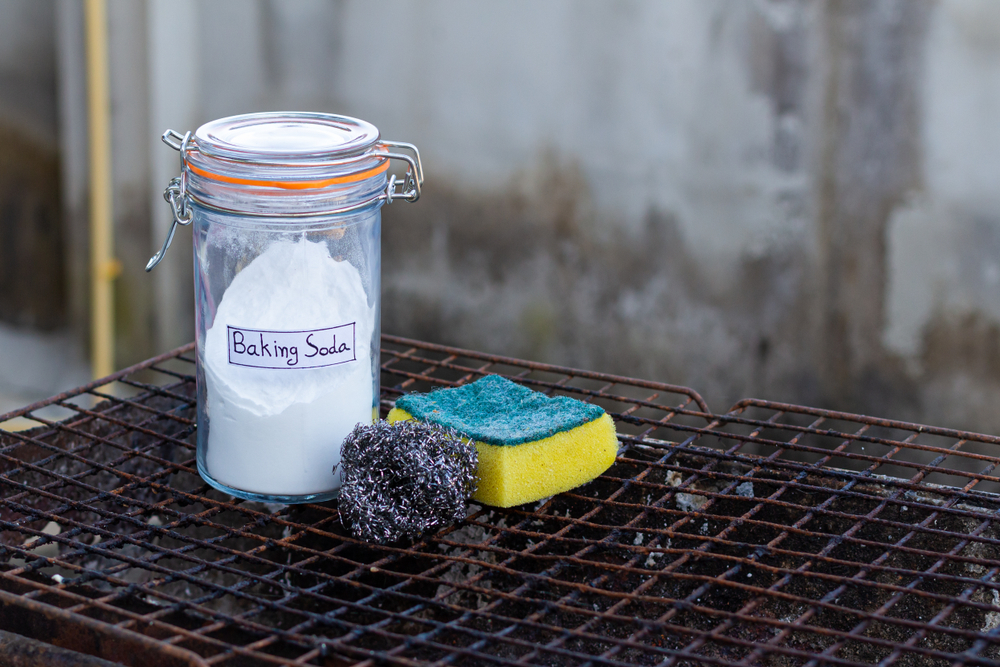
Baking soda is not only good for cleaning inside your home. It is also great for cleaning in your garden.
For example, either as a paste with water/ vinegar, or as a simple spray or rinse, you can use it to clean (and as a mild disinfectant) on:
- The plastic of a greenhouse or polytunnel.
- A potting bench/ staging.
- Non-metallic garden furniture.
- A barbecue or fire grill.
- Bird baths and water features.
- Containers and plant pots.
- Garden tools.
- Fruits and vegetables.
- Your own hands.
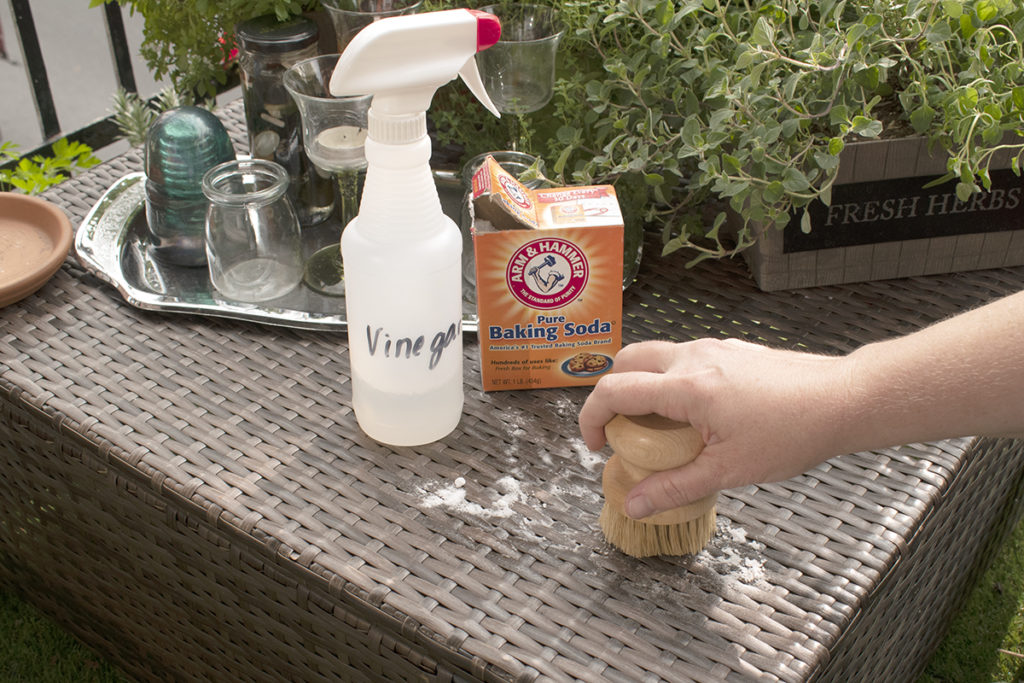
Keeping good hygiene in the garden is important. It can help keep you and your plants healthy, and avoid the spread of pests and plant diseases.
And these are just some of the many ways that this useful substance can come in handy. Remember, in addition to being useful in your garden, it is also incredibly useful in a wide range of ways around your home.
After a hard day in the garden, you can use it to soothe skin irritations from bee stings, poison ivy, sunburn and more. You can use it to make bath bombs for a relaxing soak, or a range of other natural products to help you unwind after all your hard work.

Get the famous Rural Sprout newsletter delivered to your inbox.
Join the 50,000+ gardeners who get timely gardening tutorials, tips and tasks delivered direct to their inbox.


